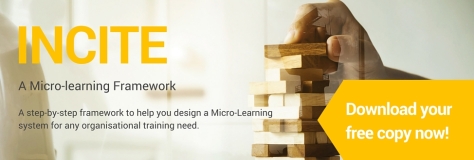There is a big difference between a course that is engaging, and a course that is well-documented.
You may create a comprehensive course with interactive branch scenarios and detailed explanation, but, if it is not relevant to the learner, than it will just confuse or worst case, frustrate her. Such a pattern may be good and easy to build, but it is only good enough to share information. It lacks in creating engagement and results in poor retention in the mind of the learner. Such courses are ‘well-documented’, but not engaging.
Engagement requires an emotional connection between the content and the learner. It goes beyond presenting interactive content; it is about designing truly motivating learning experiences.
The biggest challenge in creating an elearning course is engaging the learner, and there is a very simple solution for this – Case Studies
So here’s how you can use case studies to make your course engaging and interesting.
- It is after all, a story: Humans have used the art of story-telling as a mode of communicating ideas and knowledge since the Stone Age, and there is a reason behind it. We tend to remember a story better than just facts, and it provides a very practical, firsthand account of events that happened, and the appropriate solutions to them.
- It is simple: The simpler your story, the clearer is the message and the easier it is for the learner to remember and use it when required. If you stuff your course with extra details, your course will end up being a clutter of abstract information, making it tougher for both – you and the learner.
- A relevant perspective: If you tell your story from the perspective of the customer, or anyone other than the learner, she will receive insights on the situation from a different perspective too. Also, this will raise the interest of the person enrolled in your course. Instead of telling the learner what they need to know, show them how not knowing affects others.
Even as a trainer, this makes things simpler for you as well.
Case studies need lesser time to build, and they rarely result in an information dump. Thus, you waste lesser time and energy, thinking and pondering over your course, and tweaking it time and again by introducing gimmicks to make it more engaging.
A case study is still mostly linear, but I see it as a first step in an iterative process of moving away from the boring click and read style. What is your take on this?
P.S.: If you are interested in knowing about micro-learning, then this one is a good place to start – 5 reasons why micro-learning is perfect for today’s workforce


